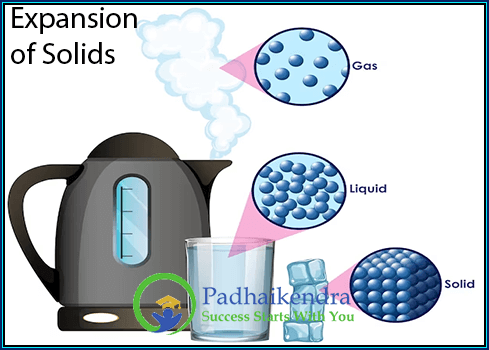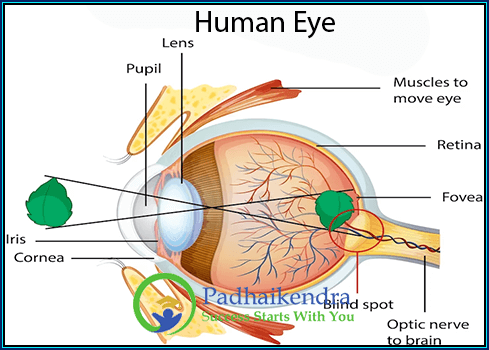When solids are heated, they expand in all directions. The two types of expansion that occur in solids are Linear expansion and Superficial (or areal) expansion.
Linear expansion
Linear expansion refers to the increase in the length of a solid when heated. This can be expressed mathematically using the equation:
ΔL = αLΔT
where ΔL is the change in length, αL is the coefficient of linear expansion, L is the original length, and ΔT is the change in temperature.
The coefficient of linear expansion is a material-specific constant that determines how much the material will expand or contract per unit length per degree of temperature change.
Superficial (or areal) expansion
Superficial (or areal) expansion refers to the increase in the area of a solid when heated. This can be expressed mathematically using the equation:
ΔA = 2αA A ΔT
where ΔA is the change in area, αA is the coefficient of superficial expansion, A is the original area, and ΔT is the change in temperature.
The coefficient of superficial expansion is a material-specific constant that determines how much the material will expand or contract per unit area per degree of temperature change.
In both cases, the expansion is proportional to the change in temperature and the coefficient of expansion. The magnitude of the expansion depends on the material’s properties, the initial temperature, and the change in temperature.
Both linear and superficial expansion are important considerations in various applications, such as in building construction, manufacturing, and the design of various mechanical devices.
Consequences of the expansion of solids
 Thermal stress
Thermal stress
When a solid is subjected to significant temperature changes, it can experience thermal stress. This is caused by the different rates of expansion and contraction of different parts of the material, which can lead to internal forces that can cause the material to crack, deform, or fail.
Superficial (or areal) expansionIn buildings and other structures, the expansion and contraction of different materials can cause damage if they are not properly designed to accommodate these changes. For example, if a metal pipe is rigidly attached to a concrete wall, the expansion of the pipe due to changes in temperature can cause it to pull away from the wall, leading to damage or failure.
Accuracy of measurements
The expansion of measuring instruments can affect the accuracy of measurements. For example, the expansion of a ruler or a measuring tape can cause them to give incorrect measurements when used at different temperatures.
Design considerations
The expansion and contraction of materials due to changes in temperature must be taken into account when designing various structures and machines. For example, the expansion of railroad tracks due to changes in temperature must be accounted for in the design of the track to prevent buckling or derailment.
Practical applications
The expansion and contraction of materials can also be used in practical applications. For example, bimetallic strips can be used in thermostats and other devices to detect and control changes in temperature.
Overall, the expansion of solids due to changes in temperature is an important consideration in many areas of engineering and construction and can have both positive and negative consequences depending on how it is managed and accommodated.
Applications of expansions of solids
Thermal compensation
The expansion and contraction of materials due to changes in temperature can be used to compensate for changes in dimension. For example, quartz and certain metals are used in clock and watch mechanisms because they have a predictable rate of thermal expansion, which can be used to keep time accurate.
Structural design
In building and bridge design, the expansion and contraction of different materials due to temperature changes must be taken into account to prevent damage and ensure safety. Expansion joints, which are designed to allow for the expansion and contraction of materials, are commonly used to prevent damage to structures.
Manufacturing
In many manufacturing processes, materials are heated and cooled to achieve specific properties or dimensions. The expansion and contraction of materials due to temperature changes can be used to create precise dimensions in parts and products, such as bearings and machine components.
Bi-metallic strips
Bi-metallic strips consist of two materials with different coefficients of thermal expansion, which are bonded together. When the strip is heated, the materials expand at different rates, causing the strip to bend. Bi-metallic strips are used in thermostats, switches, and other devices that respond to changes in temperature.
Power generation
The expansion and contraction of materials due to temperature changes are used in power generation, particularly in thermoelectric power plants. Heat is used to create steam, which then drives turbines to generate electricity. The expansion of the materials in the turbines due to the heat is used to generate power.


 Thermal stress
Thermal stress


